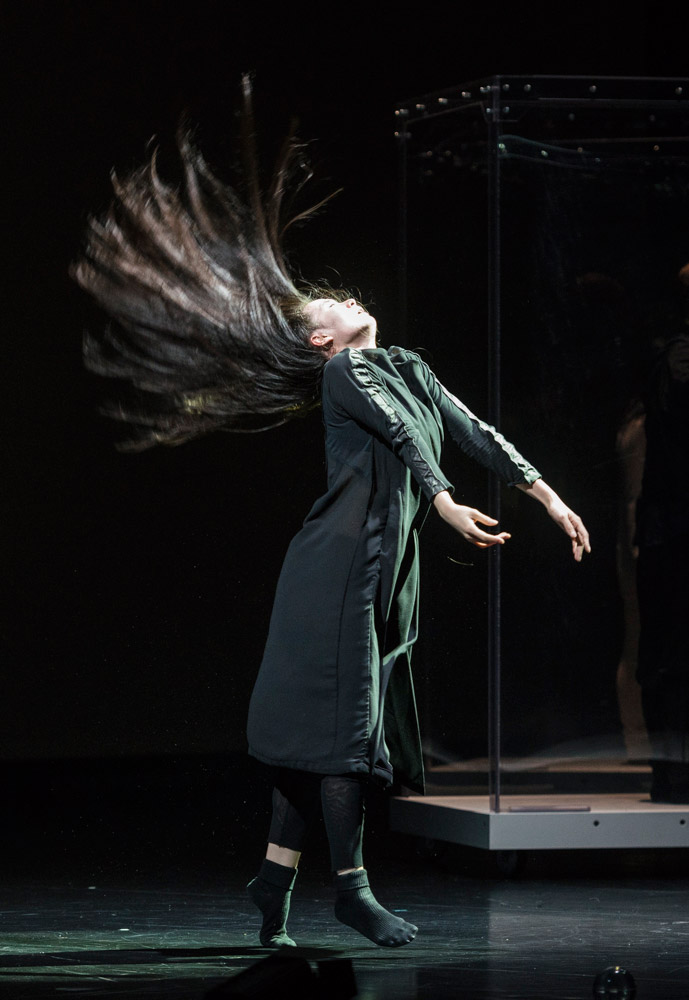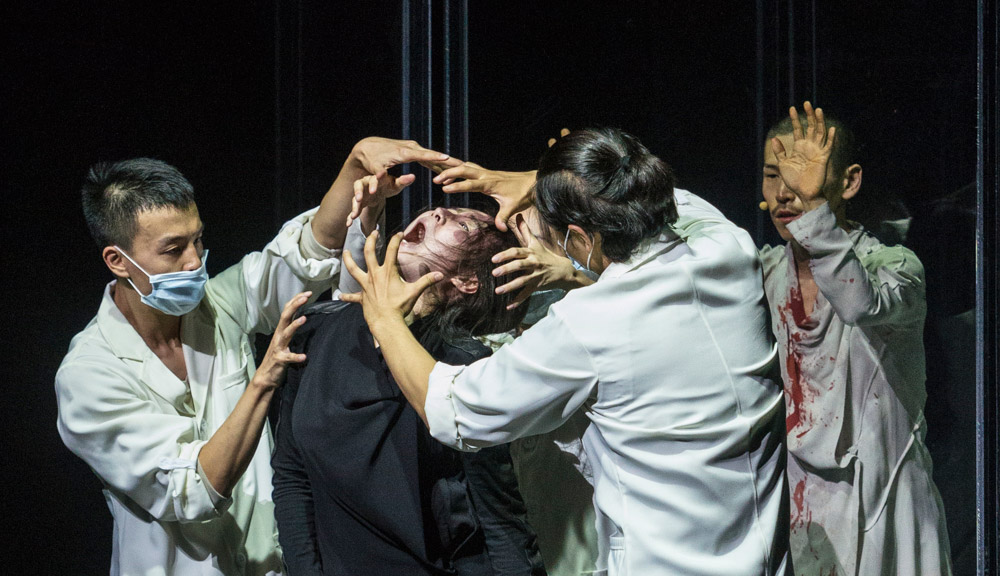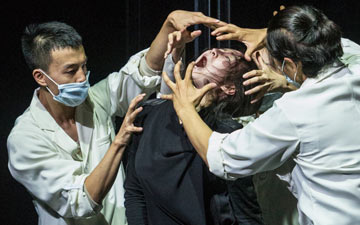
© Foteini Christofilopoulou. (Click image for larger version)
Sidi Larbi Cherkaoui/Yabin Studio/Eastman
Genesis 生长
London, Sadler’s Wells
28 September 2015
Gallery of pictures by Foteini Christofilopoulou
www.east-man.be
www.sadlerswells.com
I wonder if there might be more than one Sidi Larbi Cherkaoui. The extraordinarily diverse work of this uber-talented Belgian-Moroccan choreographer (although not so much, any longer, performed by himself) is a regular feature at theatres and opera houses around the globe, not least here at Sadler’s Wells, which has already seen M¡longa, his unique take on argentine tango, and his production of Frame[d] for the UK’s National Youth Dance Company, within the past five months.
Although not matching the extreme frequency of a different production every two months, recent years have seen a regular stream of Cherkaoui events (albeit badged in different ways) passing through London. He has recently taken on the artistic directorship of Royal Ballet Flanders and so it will be interesting to see if this global creative whirlwind will be more settled upon Belgium for the future.

© Foteini Christofilopoulou. (Click image for larger version)
Part of the formula for Cherkaoui’s prolific output is based on personal inquiry associated with the desire to learn and collaborate, stamping his indelible mark on different cultures and dance styles. In addition to tango, he has taken on the martial arts of Shaolin monks in Sutra, flamenco (with María Pagés) in Dunas, the classical Indian art of Kuchipudi in Play (with Shantala Shivalingappa), the action-packed graphics of manga art in TeZuka and classical ballet with his own production of The Firebird for Stuttgart Ballet. In addition to Pagés and Shivalingappa, he has created work with Akram Khan, Antony Gormley and Damien Jalet amongst other artists across many genres.
Made in 2013, Genesis is another in this sequence of largely one-to-one collaborations, bringing Cherkaoui together with the Beijing-based actress and dancer, Yabin Wang, and uniting their respective corporate entities, Eastman and Yabin Studios, in this co-production, which also brings together dancers from both companies. Demarcation lines were, however, clearly defined with Cherkaoui credited as sole choreographer and Yabin as producer.

© Foteini Christofilopoulou. (Click image for larger version)
While other Cherkaoui collaborations have generally crossed boundaries to link contemporary movement with the borrowed style, in Genesis there appears to be a multiplicity of influences. This is most evident in the bespoke musical content, largely composed by Olga Wojciechowsa (a regular Cherkaoui collaborator) but influenced by the contributions of a Congolese singer (Kaspy N’dia), plus an Indian mridangist (a drummer with a special drum) and a Polish pianist, respectively Manju B Chanramouli and Basia Drazkowska . Thus, the over-arching, reflective, often melancholic Chinese flavour of the music was interwoven with Indian, European and African content. The score was consistently enjoyable.
The set construct bore some architectural similarity to the concepts in Sutra and Babel (two former Cherkaoui works) but with the spatial flexibility of wooden boxes and metal frames being replaced by Perspex telephone-box-shaped structures that could be easily moved. Each box appeared to contain a performer, with those at the rear being larger to accommodate the musicians and their instruments. But, there was an optical illusion since these transparent boxes were missing a side (or perhaps two), which meant that, when joined together in different permutations, the dancers could cross over from one unit to another, perhaps to provide a constant circular motion around four boxes linked in the shape of a cross, or to create a long corridor of movement. This visual trickery was enhanced by the Perspex creating reflections of the dancers, such that it was initially impossible to tell how many there really were. From the opening, the performers seemed like mannequins enclosed in a glass jar and when they moved it was a peculiar Beijing take on A Night at the Museum.

© Foteini Christofilopoulou. (Click image for larger version)
Eventually, one by one, dancers left the boxes and, in so doing, their free movement became the most extraordinary element of the show with mesmerising, slithering, body-popping solos by Tsuki Kozuki and Elias Lazaridis and a long absorbing final dance by Yabin herself, which was performed to a collective, concentrated silence in Sadler’s Wells of the type that could register a pin drop.
The whole affair appears to be concerned with the points of entry and departure for human life with the Perspex boxes perhaps representing the ascetic conditions of modern, institutional-based places of birth and death, while the dancers’ white coats and facial masks indicate the medical profession who largely control the circumstances of those events.
My main – and only – criticism comes perhaps in a lack of varying pace and changing dynamic to the work’s ebb and flow. At the end – the piece lasts around 80 minutes with no interval – I felt as if I had been the recipient of a prolonged bout of relaxing therapy, during which I fought hard not to succumb to the soporific temptation. The changing fluctuations of the journey in human growth and development seemed to be overlooked in a work that, whilst beautiful to look at and listen to, was generally conducted at much the same tempo. There was just not enough variety to keep me consistently entertained over the whole span. But, then again, I guess that’s life!

















You must be logged in to post a comment.